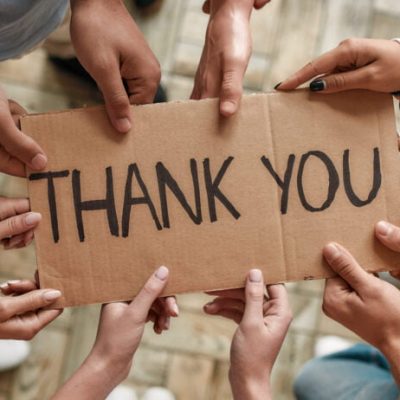


Donor acknowledgment letters are more than just a “thank you” letter. Most tax-exempt organizations have certain requirements to follow — including providing donors with a donation “receipt” — often called an acknowledgment letter.
Donors giving more than $250 in a single contribution to a tax-exempt nonprofit organization need a written acknowledgment from the organization to claim that deduction on their individual income tax return.
Proper written acknowledgments can include many forms — letters, e-mails, or postcards. There is no official IRS form that the exempt organization has to complete.
The IRS sets out that acknowledgments must be provided “in writing, at the time of solicitation or when the payment is received, and in a way that will come to the attention of the donor,” according to IRS Publication 1771.
For the letter to be considered “contemporaneous” with the contribution, “a donor must receive the acknowledgment by the earlier of: the date on which the donor actually files his or her individual income tax return for the year of the contribution; or the due date (including extensions) of the return.”
Generally, most nonprofit organizations provide written acknowledgment by January 31 of the year following the receipt of the contribution. In this way, the donor will have time to prepare their tax returns.
We advise that organizations provide written acknowledgment to donors in a timely manner — as close to the receipt of the gift as possible. We believe that expressions of thanks are like pancakes – they need to be served right away!
Again, the IRS requires that a tax-exempt organization send a formal acknowledgment letter for any donation that is more than $250. The donor will use this letter as proof of his or her donation to claim a tax deduction.
The acknowledgment to the donor should include the following:
Cash donation:
“Thank you for your contribution of (insert amount of cash donation) on Date. No goods or services were provided in exchange for this contribution. Name of NP is an exempt organization as described in Section 501(c)(3) of the Internal Revenue Code; EIN ##.”
You can make this a fun, too! We like seeing a message tied to the nonprofit’s work. For example:
“Thank you for your contribution of (insert amount of cash donation) on Date…No benefit was bestowed upon this donor in exchange for this contribution…other than the joy of giving to an organization that supports programs for children. We are an exempt organization as described in Section 501(c)(3) of the Internal Revenue Code; EIN ##.”
For a non-cash item:
“Thank you for your contribution of one used table and set of six oak chairs that NP received on Date. No goods or services were provided in exchange for your contribution.”
The IRS has denied tax deductions to donors who did not have the proper acknowledgment from nonprofits. Two recent Tax Court cases outline the importance of nonprofits following the letter of the law. (Read: Chronicle of Philanthropy’s article: “IRS Crackdown Puts Focus on Gift Records“). Help make this easy for your donors.
When a tax-exempt entity provides a good or service in exchange for a donation of more than $75, the nonprofit organization has to (1) provide the donor with written notice of the fair market value of those goods or services received and (2) tell the donor that only a portion of the donation that exceeds the fair market value is tax-deductible.
The nonprofit will make a good faith estimate of the fair market value of the item or service and inform the donor. Generally, the nonprofit’s good faith estimate of the value of goods and services will be treated as the fair market value, and the donor can rely on that estimate (unless the donor knows that estimate is unreasonable).
Tell the donor how their valued gift was used. We advise our clients to share more than just the donation tax language.
Mollie Cullinane loves to help nonprofit organizations with their fundraising acknowledgements. Ready for some one-on-one help? Would you like templates for your organization or its development office? Contact us to learn more.